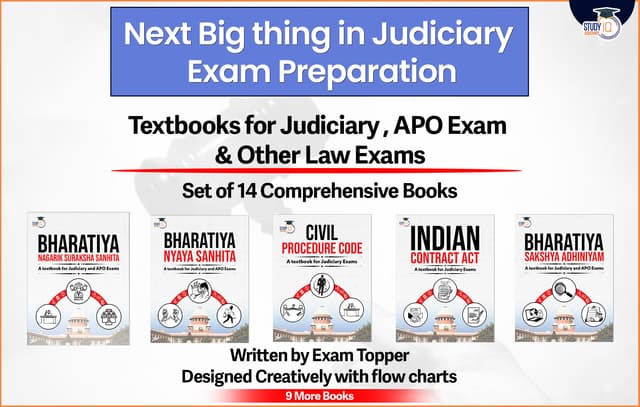Table of Contents
“Spoken words fly away, written words remain.”
This timeless saying reflects the very essence of legal drafting — a discipline that goes beyond writing and delves into the precision of law.
As Justice G.P. Singh rightly observed, “Every word in a statute or legal document must be given meaning; drafting must avoid redundancy and ambiguity.”
Similarly, Justice Dipak Misra captured its power by stating, “A sound draft is a silent argument—it speaks for itself before the court.”
What is Legal Drafting?
Legal drafting is not just a technical skill, but a foundational art in the legal profession. It involves converting complex legal principles into structured, concise, and enforceable language, enabling clarity in rights, duties, and remedies. From contracts and petitions to corporate documents and pleadings, the quality of a draft can determine the effectiveness of legal communication and the efficiency of dispute resolution.
Drafting in law is both a creative and analytical process. It requires not only fluency in legal language but also a deep understanding of substantive and procedural law. A well-drafted document — be it a writ, deed, suit, appeal, or application — saves time, reduces litigation costs, and facilitates smoother judicial processes. Its influence extends beyond the courtroom, shaping interactions between clients, lawyers, and the judiciary. Recognising its vital role, Indian legal education mandates the subject “Drafting, Pleading, and Conveyance” across law schools. Students are trained to prepare various legal instruments, including civil suits, criminal complaints, writ petitions, special leave petitions, and interim applications.
In essence, legal drafting forms the bedrock of legal relationships and proceedings. A clear and legally sound draft not only defines obligations and rights but also enhances the enforceability of legal documents. Understanding the structure, tone, and legal language of drafting is indispensable for any aspiring legal professional committed to upholding justice through words that endure.
Types of Drafting in Law generally
- Transactional Drafting: Includes contracts, agreements, and deeds.
- Litigation Drafting: Includes pleadings, petitions, and legal notices.
- Legislative Drafting: Focuses on statutes, ordinances, and policies.
- Policy Drafting: Deals with frameworks and guidelines for organisations or governments.
- Research-Based Drafting: Involves drafting legal opinions or reports.
Common Types of Legal Documents Drafted in India
- Contracts: Agreements between two or more parties outlining their rights, obligations, and terms of the agreement. Drafting contracts in compliance with the Indian Contract Act, 1872, and ensuring the enforceability of terms is vital in various civil cases.
- Pleadings: These are formal documents filed in court submitted by parties in a case, stating their claims and defences. In India, the primary pleadings are:
- Plaint: The initial document filed by the plaintiff outlining the facts of the case and the relief sought.
- Written Statement: The defendant’s response to the plaint, countering the claims made by the plaintiff.
- Legal Opinions: Written advice from lawyers on legal issues and potential courses of action.
- Wills and Trusts: Documents that outline a person’s wishes regarding their property and assets after their death.
- Company Documents: Such as memorandum of association, articles of association, and shareholders’ agreements.
- Petitions and Applications: Various writs (e.g., habeas corpus, mandamus) or applications (e.g., bail application, transfer application) are filed depending on the nature of relief sought.
- Affidavits: These are sworn statements that serve as evidence in support of facts or statements, forming an essential part of evidence in judicial proceedings.
- Legal Notices: Pre-litigation tools such as demand notices or notices for specific performance are drafted as per the requirements of the case and statute.
- Memorandum of Appeal or Review: Drafting appeals involves presenting grounds for challenging a lower court’s decision, requiring precision and strong factual/legal backing.
Format of Legal Drafting
While the format of legal drafting can vary depending on the document type, a general structure includes:
- Title: Clearly stating the document’s purpose (e.g., “Sale Agreement”).
- Introduction/Recitals: Provides context, including background information and intent.
- Parties Involved: Names and roles of the parties.
- Definitions: Clarifies key terms used throughout the document.
- Main Clauses: Specifies terms, conditions, rights, and obligations.
- Recitals: Background and intent of the document.
- Terms and Conditions: Clearly defined clauses and obligations.
- Signatures: Space for parties to sign and date.
- Annexures: Includes supplementary documents if needed.
A well-drafted petition reflects the strength of the case; verbosity is no substitute for substance.”- Fali S. Nariman
The Foundational Role of Drafting and Pleading in Legal Practice
Drafting and pleading are essential pillars of legal practice, forming the structural foundation upon which every case is built and presented before a court of law. A meticulously crafted pleading enhances the strength of a legal argument, minimises the scope for unnecessary litigation, and contributes significantly to the clarity and efficiency of judicial proceedings. These skills are not merely academic requisites taught in law schools but are critical professional competencies that distinguish an adept legal practitioner from the rest.
In the broader global legal framework, legal drafting occupies a central role in ensuring that facts are accurately presented and aligned with the applicable laws. The inability to articulate legal issues through a structured and coherent draft often becomes a barrier for individuals seeking judicial remedies, as courts rely on properly formatted documents to comprehend and adjudicate disputes.
Legal drafting, therefore, is the methodical process of creating authoritative texts that embody the intentions of the concerned parties. It calls for a specialised understanding of legal systems and a nuanced grasp of language and structure.
Decoding Legal Complexity Through Writing
The significance of legal drafting lies in its ability to decode the complexity of laws for practical application. The legal domain is inherently intricate and often inaccessible to the layperson due to its specialised language and technical depth. In this context, legal writing transforms into an expressive art form — one that not only conveys factual and legal positions but also guides all stakeholders toward a shared understanding of obligations, evidence, breaches, and reliefs.
This blend of intellectual clarity and empathetic communication demands both scientific precision and creative articulation. As civilisation has evolved, so too has the role of legal writing in the delivery of justice, becoming increasingly sophisticated and indispensable. Renowned legal scholar Haggar aptly described drafting as one of the most intellectually challenging aspects of legal work, requiring abstract reasoning, legal insight, investigative skill, and methodical organisation.
Drafting as an Art and a Science
The longstanding debate about whether drafting is an art or a science continues, but perhaps it is best described as both. While it is grounded in legal facts, statutes, and doctrines that require logical rigour, effective drafting also relies on a creative command of language, the ability to persuade, humanise, and emotionally engage the reader.
The fusion of these two dimensions is what makes legal drafting a unique skill. Sir Geoffrey Bowman’s perspective as a seasoned parliamentary draftsman echoes this duality, acknowledging that legal drafts must not only convey legality but also communicate meaning and intention with clarity and emotional resonance.
The Method and Mechanics of Drafting
This synthesis of logic and linguistic artistry is especially evident in the drafting of complex documents such as development agreements, conveyance deeds, legal applications, or adjournment motions under procedural laws. Each document demands tailored formatting, precise word choice, and legal alignment.
Legal writers must begin by deeply understanding the client’s issue, outlining the key elements, conducting extensive legal research, applying the relevant laws and precedents, and finally revising their drafts to eliminate errors and omissions. These steps ensure that the document stands the test of legal scrutiny and serves its intended purpose within the legal framework.
The Urgent Need for Reform in Legal Drafting
Yet, despite its enduring relevance, legal drafting must also evolve. In today’s fast-paced, digitised, and interconnected world, the language of the law must be accessible, engaging, and aligned with modern communication norms. Legal terminology should no longer remain the exclusive domain of specialists.
Public understanding of legal processes depends on the simplification of language and the modernisation of outdated concepts. Legal writing must reflect contemporary realities, from digital contracts to online dispute resolution, and resonate with the constitutional spirit of justice, fairness, and equality.
Towards a More Accessible and Transparent Legal System
Accordingly, several reforms are urgently needed in legal drafting.
- First, accessibility must be prioritised — legal texts should be intelligible to non-lawyers to promote greater civic engagement and legal literacy.
- Second, modernisation of archaic terms and definitions is essential, particularly in the context of evolving technologies and digital governance.
- Third, traditional drafting frameworks must be re-evaluated and updated to address emerging socio-legal challenges with flexibility and inclusivity.
Moreover, clarity, simplicity, and precision must guide all legal writing. Drafts that are concise yet complete reduce ambiguities and facilitate smoother legal transactions. Finally, a simplified drafting style not only ensures accuracy and enforceability but also invites greater public trust and participation in the justice system.
In essence, legal drafting is no longer a mere technical craft — it is a dynamic tool of empowerment, communication, and transformation in the legal landscape. It enables the articulation of rights, remedies, and responsibilities in a language that endures. Whether viewed as an art, a science, or both, legal drafting remains indispensable to the practice of law, not only shaping outcomes in court but also shaping the relationship between the law and the people it serves


 Reserved vs General Quota: Supreme Court...
Reserved vs General Quota: Supreme Court...
 Supreme Court’s Interim Order on the W...
Supreme Court’s Interim Order on the W...



















